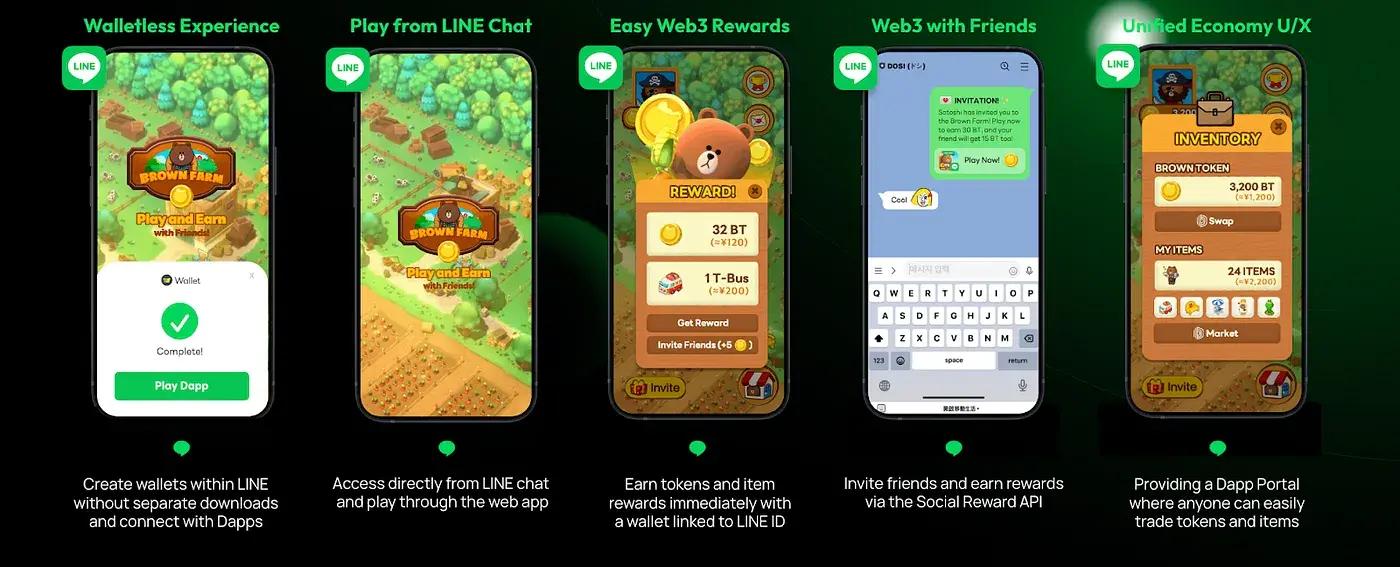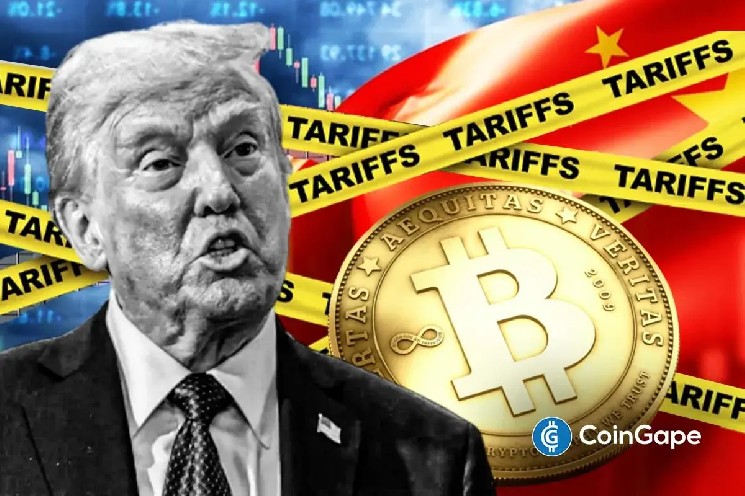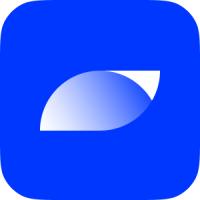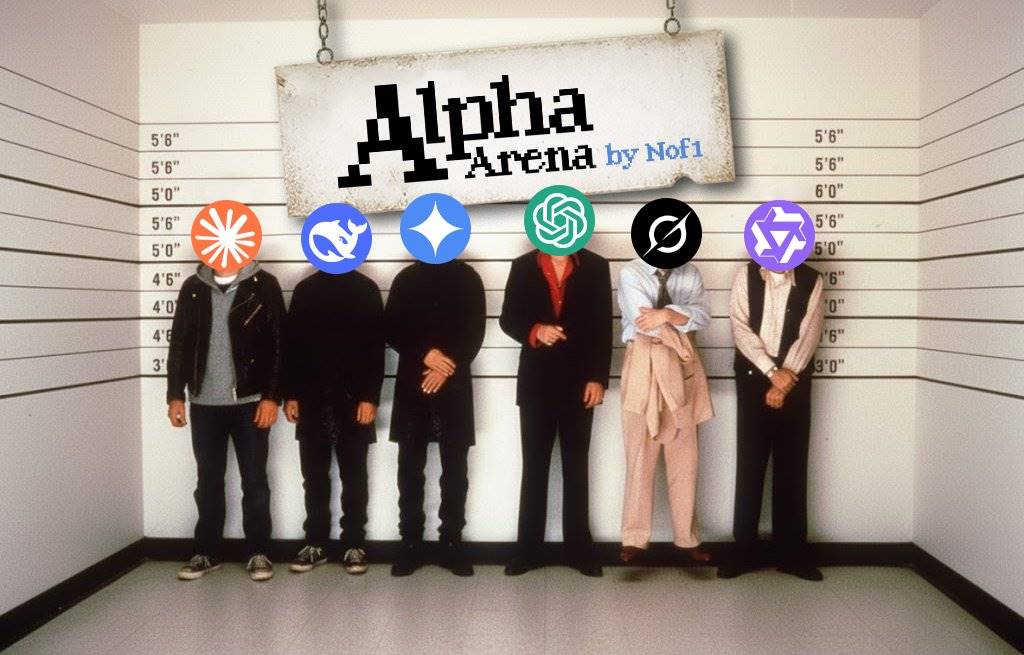Author: Peter Ayo (Kaia Foundation Developer Advocate)
Introduction
In today's digital world, a seamless user experience is crucial. Accenture found that 67% of users are more willing to use a single APP to meet all their life needs rather than using multiple APPs. This indicates that platforms that provide a unified interface are becoming increasingly important in managing the diverse needs of users' lives. This is also the reason for the rise of super apps.
With the emergence of blockchain and decentralized applications (Dapps), a new window of opportunity has opened up to expand the super app paradigm. The super app ecosystem can now host Mini Dapps, decentralized applications, allowing users to enjoy the Web3 experience, such as wallet creation, digital asset ownership, and FT/NFT trading, without facing the common complexities of Web3.
The collaboration between LINE NEXT and Kaia aims to create a Dapps portal where users can directly access a wide range of decentralized services within the messaging application. The powerful combination of the two has the potential to drive mass adoption of Web3 by making it more user-friendly and accessible.
The State of Life Platforms and Mini Dapps
In the evolving digital landscape, life platforms have become a powerful catalyst for widespread digital adoption. These integrated platforms provide users with a unified interface to access a variety of services to meet personal and business needs. Pioneering apps like LINE have been at the forefront, not only providing users with basic services but also allowing developers to create their own Mini apps to enrich the platform's functionality.
A life platform typically starts with a primary service, such as messaging or social connection, and then gradually adds more services, such as healthcare, e-commerce, and even travel. Users can now imagine easily participating in various Web3 activities, such as creating wallets, using Dapps, and on-chain interactions, through this platform without facing the common entry barriers of Web3 projects.
LINE, with over 196 million monthly active users, is one of the most popular messaging apps globally. It supports Mini apps, lightweight web applications that allow developers to create services directly connected to LINE's vast user base. With this service functionality, users can access a seamless and intuitive experience without leaving the platform, such as booking a doctor's appointment or ordering food, without switching between apps.
The powerful combination of Web3 technology and life platforms presents an exciting opportunity. The collaboration between LINE NEXT and Kaia aims to bridge the gap between Web2 and Web3, reaching a massive real-world user base. LINE is integrating Mini Dapps supported by the Kaia blockchain into the LINE Messenger, creating a Web3-driven life platform. This integration will make Web3 simple and intuitive.
The Background of LINE NEXT and Kaia: A Powerful Leverage
Understanding the key players behind this innovation - LINE NEXT and Kaia - is crucial when exploring the potential of super apps and Mini Dapps. They each bring successful backgrounds and, through their collaboration, provide powerful advantages that lay the foundation for a comprehensive Mini Dapps ecosystem, positioning them at the forefront of the Web3 space.
LINE NEXT: Leading the Transition from Web2 to Web3
LINE started as a messaging app and quickly evolved into a life platform. It has become the entry point to a vast ecosystem, adopting an "app-within-an-app" model to provide users with a wide range of services, all within a unified interface. LINE is a one-stop platform, offering services across messaging, fintech, e-commerce, and entertainment, making it a true life platform.
LINE NEXT has a broad user base spanning Japan, Taiwan, Thailand, and Indonesia, making it an ideal platform to introduce Web3 technology to a large user base. By integrating Mini Dapps (decentralized applications) to handle functionalities such as decentralized finance, digital asset ownership, and X2E gaming, LINE may fundamentally change the way users interact with blockchain technology. With LINE's hundreds of millions of active users, the transition from Web2 to Web3 could happen faster than expected.
Kaia: Empowering Asia's Blockchain Future
The core enabler of this trend is the Kaia blockchain. Kaia was formed by the merger of the Klaytn and Finschia blockchains, initially developed by Kakao (another leading super app in Korea) and LINE, respectively. Kaia's vision is to bring Web3 to the fingertips of hundreds of millions of Asian users.
As one of the largest Web3 ecosystems in Asia, Kaia has 420 decentralized applications (Dapps), 45 governance partners, and over 34 million wallets, providing the scalability and security required for consumer blockchain applications, laying the foundation for the thriving Mini Dapps ecosystem.
The Synergistic Power of the Mini Dapps Ecosystem
The combination of LINE NEXT and Kaia provides a powerful leverage that could redefine the Web3 Mini Dapps ecosystem for several reasons:
- Massive user base: LINE NEXT's extensive user base provides Mini Dapps developers with the opportunity to directly reach out to millions of potential users, lowering the adoption barrier.
- Developer-friendly infrastructure: Kaia's blockchain technology enables developers to seamlessly integrate decentralized applications directly into the LINE ecosystem, ensuring a smooth integration without compromising the user experience.
- Cross-regional impact: The combined influence of LINE NEXT and Kaia across multiple Asian markets creates a strong cross-regional network effect, accelerating Web3 adoption in different regions.
By leveraging these advantages, LINE NEXT and Kaia are not just participating in the Web3 construction - they are laying the foundation for Web3 transformation. Their powerful collaboration has the potential to reshape the way developers and users interact with Dapps, driving Web3 adoption to new heights.
Strategic Interests: User Experience and Developer Growth
User Convenience: Providing Services in Familiar Environments
One of the biggest barriers for Web2 users to enter the Web3 world is the complexity of Web3. From learning new concepts like cryptocurrencies and wallets to the upfront financial commitments (such as funding accounts and paying gas fees), the entry barrier to Web3 is high. This steep learning curve discourages many users, hindering the gradual adoption of Web3 where users progressively become Web3 value participants.
This is where Mini Dapps on LINE truly shine, offering a seamless experience that directly meets user needs. Unlike many crypto applications that require significant upfront financial commitments, Mini Dapps' lightweight and easy-to-use nature can provide users with a way to explore Web3 without the need to install multiple apps or go through multiple steps. Community and consumer-oriented applications have lower user barriers, making them particularly well-suited for Mini Dapps.
By integrating Mini Dapps directly into the familiar LINE interface, users can access crypto services without the need to download additional apps or set up wallets. The built-in social logins and in-app wallets completely eliminate the often confusing wallet setup process, making the user's interaction with Web3 seamless, intuitive, and stress-free, allowing them to focus on the service itself rather than the underlying blockchain technology.
Kaia's vision of bringing Web3 to the fingertips of millions of users is key, and its collaboration with LINE NEXT is crucial to achieving this goal. Users can access Web3 services with just a few taps in the apps they use every day, significantly lowering the psychological barrier to adopting Web3 services. For users, they don't need to cross the chasm into a completely unfamiliar ecosystem; they can naturally experience the convenience of Mini Dapps just like using other LINE features. This familiarity and convenience make LINE NEXT's integration of Web3 services into users' daily lives a true game-changer.
Furthermore, design with a focus on action played a crucial role in this strategy. According to industry research, users spend 90% of their mobile device usage time on apps rather than mobile web pages, highlighting the importance of mobile apps in high-frequency interactions and user engagement. LINE's inherent adaptability to the mobile environment perfectly aligns with this trend. Although many Web3 applications lack a satisfactory mobile experience, the Mini Dapps on LINE are designed specifically for mobile users, allowing them to easily interact anytime and anywhere without complex knowledge or additional downloads. This mobile convenience enables users to more naturally integrate with Web3 services.
The transition from Web2 to Web3 is gradual and far-reaching. Mini Dapps serve as an entry point for users to engage with Web3, allowing even those unfamiliar with concepts like tokens, wallets, or transactions to gradually adapt through these simple and user-friendly features. In this process, users will become increasingly familiar with and adept at the underlying Web3 technologies, making them more willing to explore deeper Web3 activities like DeFi and NFT trading.
By "entering from where users are familiar," the Mini Dapps on LINE lower the adoption threshold for Web3, making the transition from Web2 to Web3 smooth and natural. This is the essence of user convenience - enabling users to explore and interact with advanced technologies without feeling pressured.
Dapp Release and Growth: Expanding Accessibility, Lowering Barriers
One of the most pressing challenges for emerging decentralized applications (Dapps) is discovery and user acquisition. Most Dapps, regardless of their potential, struggle to gain user attention due to the lack of an organized and user-friendly platform to discover these applications in the crypto world. For the average user unfamiliar with Web3, finding Dapps is like navigating a maze. Amidst the many specialized platforms and community networks, just discovering these applications is a challenge, let alone using them.
This challenge exists across all blockchain ecosystems. Even mature and popular platforms like Ethereum and Solana find it difficult to provide effective launch channels for new Dapps. While financial services like DeFi platforms and exchanges can prove their value through reliable metrics such as Total Value Locked (TVL) or trading volume, consumer-facing applications, especially newer ones, often face significant challenges in gaining exposure and attracting users.
This is where the Mini Dapps on LINE come into play, providing an integrated discovery and deployment channel. Leveraging LINE's massive user base of over 196 million monthly active users, developers no longer need to start from scratch for growth, nor rely solely on niche communities for exposure. Instead, they can connect to an existing engaged ecosystem, greatly simplifying the steps for Dapps to be discovered and used - build mini, scale big.
Ultimately, by leveraging the broad reach and existing infrastructure of LINE NEXT, combined with the decentralized power of the Kaia blockchain, the Mini Dapps provide unprecedented opportunities for Dapp developers to solve the long-standing challenges of user discovery and growth. This creates a win-win environment for both users and developers: users enjoy the convenience of easily accessing decentralized applications, while developers gain real-time exposure and user feedback, driving faster growth and adoption in the Web3 space.

Components of Mini Dapps on LINE:
Earlier, we discussed the concept of Mini Dapps. Now, let's dive deeper into the foundational components driving this exciting trend. These are the elements that developers can use to create seamless, user-friendly Web3 applications within the LINE ecosystem, helping hundreds of millions of users transition smoothly from Web2 to Web3.
1. Dapp Portal
The Dapp portal website is a core service that simplifies the process for users to access Mini Dapps within the LINE Messenger. It serves as an entry point, allowing users to connect various Dapps to LINE without the need to download new applications or undergo complex setup. This central platform lowers the technical barriers, enabling Web3 services to be more widely accessible to users.
2. Dapp Portal SDK
The Dapp portal website SDK is a development toolkit that allows web-based Dapps to be transformed into fully functional Mini Dapps on LINE. By leveraging LINE's extensive infrastructure, developers can utilize this SDK to connect with the massive user base.
Use Cases and Applications
So, what can we build with Mini Dapps? Here are a few key areas where these Dapps can thrive:
- Gaming and Social Finance Platforms
Developers can create interactive games within the LINE Messenger, allowing users to play with friends while enhancing social interactions. Additionally, users can experience various X2E (P2E, T2E, M2E) games, combining entertainment with financial incentives.
- NFT Marketplaces and Digital Collectibles
LINE Mini Dapps can serve as platforms for buying, selling, or trading Non-Fungible Tokens (NFTs), enabling users to directly engage in digital art and collectibles within the chat environment.
In the future, we can expect to see more innovative use cases developed on the LINE Mini Dapps platform.
- Productivity and Accountability Management Platforms
Mini Dapps can also be customized as productivity and accountability management tools. Whether for personal development or team collaboration, users can directly set goals, create to-do lists, and track progress within the LINE ecosystem. Furthermore, goals can be verified through smart contracts to ensure transparency and accountability.
- Social Networking and Community Building Tools
LINE Mini Dapps can help users organize activities within groups, such as event planning or voting. Community-centric Mini Dapps can enhance social interactions by simplifying user collaboration and participation, allowing users to complete these tasks without leaving the platform.
Conclusion and Future Outlook
In summary, the collaboration between LINE NEXT and Kaia has created a gateway for user access to Mini Dapps, marking the rise of a Web3 super app. While existing crypto platforms, such as exchanges or wallets, provide multi-functional services, they remain limited to transactions and their own isolated services, lacking the network effects and broad accessibility of a lifestyle platform like LINE.
The partnership between LINE NEXT and Kaia represents a breakthrough in the crypto ecosystem. Leveraging LINE's massive monthly active user base (nearly 196 million), seamless onboarding process, and a powerful deployment network through the Dapp portal website, the Mini Dapps on LINE have a unique competitive advantage.
Although we are still in the early stages, the collaboration between LINE NEXT and Kaia holds the promise of becoming a blueprint for the "app-within-an-app" model, with the potential for global expansion beyond Asia. By seamlessly connecting the user experience between Web2 and Web3, they are laying the foundation for widespread decentralized application adoption.
For those eager to be part of this revolutionary journey, the Kaia Wave program offers an ideal opportunity for developers to build and deploy Mini Dapps within the LINE Messenger. By tapping into LINE's vast user base across Asia (including Japan, Taiwan, Thailand, and Indonesia), developers can rapidly grow and test their Dapps in a real-world environment, accelerating innovation and user adoption.








